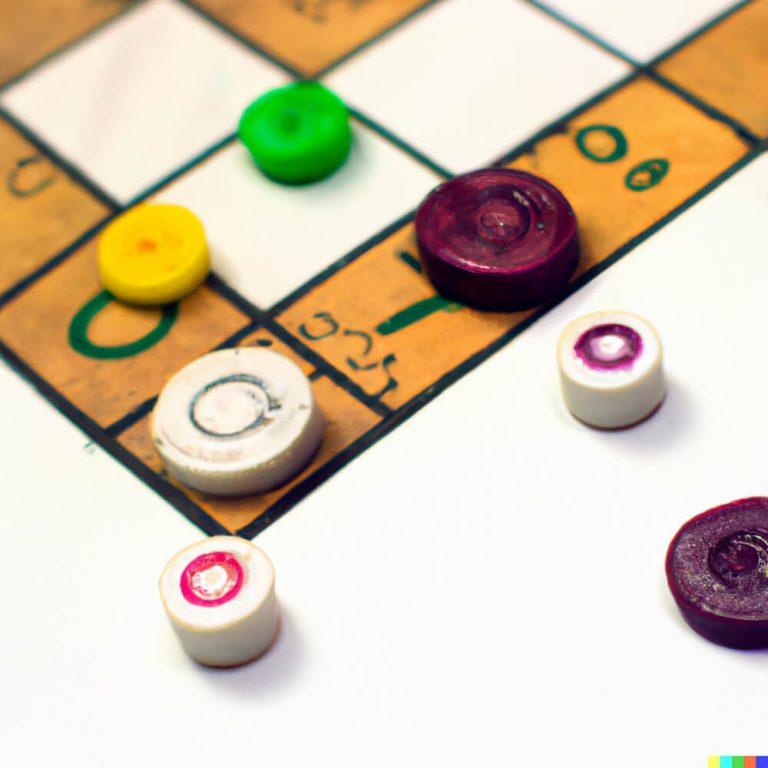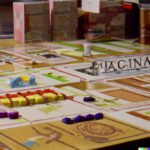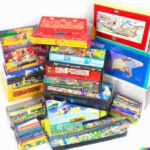Introduction
Board games have been around for centuries, providing endless hours of entertainment, bonding and stress relief. They not only offer a creative form of socialization but are also known to be therapeutic in diffusing tension, aiding decision-making skills, and grant insight into a person’s mental health. Regardless of age or culture, board games such as chess, checkers and Monopoly have held an allure among people from all walks of life.
Popular Board Games Throughout History
Classic board games have been around for hundreds of years, with some of the most popular being Chess, Go, and backgammon. These games focus on strategy, utilizing careful decision making and planning in order to win. The game pieces are mostly simple and can often be easily picked up by new players – although these games can range from easy to extremely challenging.
Contemporary board games have become increasingly popular as technology advances. While some of them draw inspiration from classic board games (like Cards Against Humanity which is based off Apples to Apples), they tend to focus more on party playability and entertaining interactions with other players. Odds and ends such as the presence of a timer device or the introduction of characters into gameplay can also add an element of excitement. Contemporary board games usually provide multiple routes for victory and randomly generated elements like dice or cards keep everyone guessing until the end.
Modern Board Games
Modern board games have come a long way since the traditional games like Monopoly, checkers, and chess. A wide variety of interesting and unique board games focusing on various themes have been released in recent years that offer new experiences for players.
Examples of popular modern board games include Settlers of Catan, a game based around the development of small settlements; Pandemic, which focuses on containment of global epidemics; Carcassonne, where players build a medieval kingdom consisting of cities, roads and monasteries; Gloomhaven, which creates an immersive story-driven environment for players to explore; Splendor, a card-based gem mining game; Wingspan, which encourages players to build bird sanctuaries; Codenames in which teams work together to uncover clues and identify spies; And Azul, a fun strategy game featuring beautiful tiles that emulates the famous Portuguese tile art. All these modern games are sure to provide hours of entertainment with their captivating themes and intriguing strategies.
New Genre of Board Games
With the introduction of card-board hybrid games, a new genre of board games is emerging. These games are a combination of both the creativity and light strategy that comes with traditional board games alongside the intense strategizing opportunities from card games. Card-board hybrids eliminate some restrictions put on both genres – for example, in many card and board games, players can’t often interact with each other as freely as they would like. The combinations featured in hybrid games allow two participants to act off one another during gameplay while still utilizing some of the most enjoyable characteristics from board and card games. In combination with more traditional board game elements such as rolling dice and building pieces, hybrids can offer more exciting experiences than either individual game by itself. Hybrid board games also give players access to expansive play areas not found in regular tabletop gaming — creating larger tactical opportunities for more strategic outcomes. Some examples of popular hybrid game include Bang!, Lords of Waterdeep, and Betrayal at Baldur’s Gate; all three feature popular mechanics from both card-game and tabletop gaming genres into an intense yet creative experience that cannot be fully enjoyed until played personally.
Win-Win Board Games
Popular win-win board games include classics like checkers, chess, and Go. These games help to develop important skill sets like strategic planning and pattern recognition. Other educational activities can also be found in these games, including mental arithmetic and logical thinking. Having a basic knowledge of the history of each game can further improve the educational outcomes. The study of Eastern chess variations such as xiangqi or Japanese shogi provides learners with the opportunity to explore different cultures while strengthening core problem-solving abilities. Board games can also be used as tools for memory training, since memorization becomes a key factor in most titles. Newer offerings such as Hive have become popular choices which allow players to hone their creativity through creating new strategies on-the-fly. There are even customizable card or dice games that can tailor players’ strategy experience based upon who is playing and what options are on the table. With the added accessibility of online gaming, classic boardgames become even more in-depth and vibrant experiences, pushing education levels ever higher with every roll of the dice or shuffling of the cards.
Creative Board Games
Creating a board game involves coming up with the concept for the entire experience. The concept should include an interesting and unique theme that sets it apart from other games, as well as goals to achieve, meaning for players to reach them, and rules for playing the game. Once you have a clear vision of what your game will look like, it’s time to start designing the components. This includes artwork and pieces including cards, tokens and pawns. At this stage, you can also decide on any special effects or gimmicks that are needed to make the game visual appealing.
At this point the mechanics of the game need to be worked out. This involves deciding how gameplay elements fit together and interact ” especially movement on the board and dice rolls ” in order to give players an immersive experience with strategic elements and replay value. It’s important to consider every possible outcome while avoiding any aspects that could be too complex or create loopholes in game balance.
Finally, there are playtesting stages where designers can check their design works in practice. They adjust based on feedback given during playtests before polishing off their final version and bringing it out into the market!
Board Games for Mental Stimulation
Playing certain board games can be an effective way to increase your mental stimulation. Board games require challenges, puzzles and problem-solving; they all involve active participation which helps you stay alert and engaged. Not only will this help enhance your focus and concentration, but it will also make your memory sharper. Memory is improved because the challenges encountered in these games often require players to remember positions of game pieces and the implementation of strategies. It is a great way for everyone to practice creative thinking and decision making skills as well as utilize their knowledge about language, relationships and tactics in each match. Additionally, some board games such as word or trivia oriented games may provide more than just physical engagement but also intellectual enrichment since they require a lot of analytical thought processes, which can improve our crucial thinking capacities. Overall, engaging with certain board games provides an overall mental stimulus which can help keep our brains fit with benefits like better cognition, creativity, adaptive strategies and problem solving techniques.
Board Games Around the World
Board games have been popular around the world for centuries, from traditional games such as Senet in Ancient Egypt to modern hits like Monopoly. Different regions of the world have their own unique versions of board games, which often reflect the culture and social norms of that place. For example, the British game Roborally has a mechanic where players must pass GO before they can complete certain tasks, a direct homage to the hit board game Monopoly. In Japan, Karuta is a popular card-matching game with roots in ancient folklore. The rules are simple: players have to identify words or phrases printed on cards out loud and be the first to grab both cards that form a set.
In some cultures, such as Chinese mahjong, different tile designs represent sacred symbols and mythical stories. Meanwhile, Indian chess dates back to 600 AD and its pieces consist of animal figurines chosen specifically to mimic ancient warfare tactics between kings. Mexican lotería is an interesting twist on bingo where iconic Latin American figures are matched onto cards depicting different objects or animals. Boardgames often become cultural landmarks that teach people about values and morality; for instance in some Indian states Chowka Bara (seven houses) is used as educational tool for young children to learn about counting numbers.
No matter the style or region, all board games are ultimately united through competition and strategy making them an engaging recreational activity for communities everywhere!
Conclusion
Board games have long been a part of history, connecting people and providing memorable experiences. They provide an easy and fun way to spend time with friends and family while stimulating thought, humor, competition, and friendly rivalry. Board games give players the chance to collaborate and create entertaining memories together by exploring strategy, luck, or simply having fun with intricate pieces that bring the game to life. Not only are board games a great source of entertainment, but more recently they have also taken on an educational role as many versions incorporate questions about history, math, art, and even science! In short, board games provide a variety of benefits to all who play them; from promoting interpersonal connection through playing with friends or family at home to learning new skills through educational-based games.

I love playing all kinds of games – from classics like Monopoly to modern favourites like Ticket to Ride.
I created this blog as a way to share my love of board games with others, and provide information on the latest releases and news in the industry.





